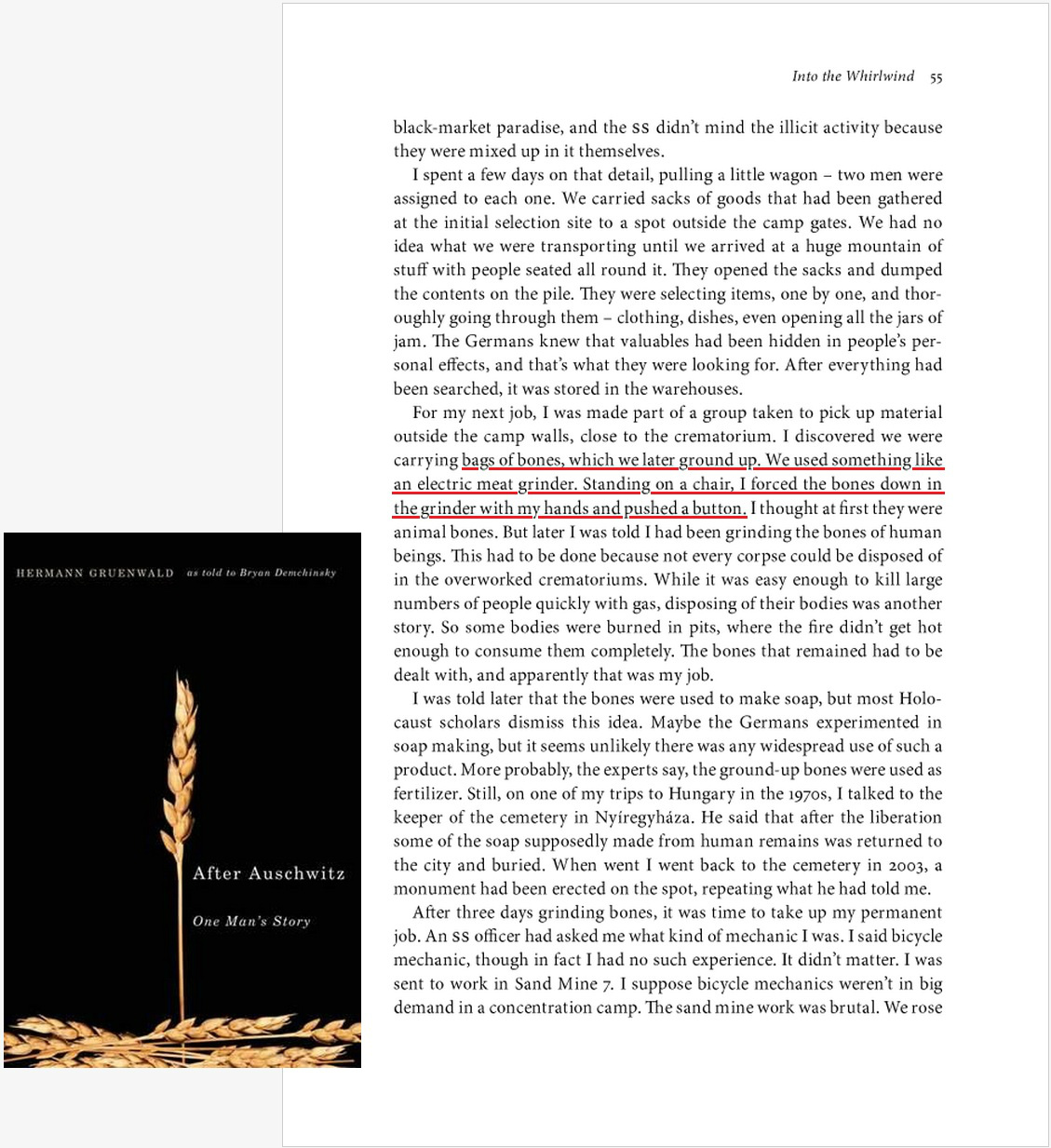"I was made part of a group taken to pick up material outside the camp walls, close to the crematorium. I discovered we were carrying bags of bones, which we later ground up. We used something like an electric meat grinder. Standing on a chair, I forced the bones down in the grinder with my hands and pushed a button. I thought at first they were animal bones. But later I was told I had been grinding the bones of human beings. This had to be done because not every corpse could be disposed of in the overworked crematoriums. While it was easy enough to kill large numbers of people quickly with gas, disposing of thie bodies was another story. So some bodies were burned in pits, where the fire didn't get hot enough to consume them completely. The bones that remained had to be dealt with, and apparently that was my job. ... the experts say, the ground-up bones were used as fertilizer."
contrary to Raul Hilberg's opinion that bones were crushed at Auschwitz
using hammers, as they failed to obtain a bone crushing machine:
"On July 16, 1942, the deputy chief of the Gettoverwaltung, Ribbe, sent a letter to "Eldest of the Jews" Rumkowski requesting a canvass of the Lodz ghetto for a bone crusher, "whether manually operated or motor driven". He added openly, "The Sonderkommando Kulmhof is interested in this crusher". The ghetto apparently had no such machine, for a few months later Biebow sent to the Lodz Gestapo the papers concerning the purchase of a mill from the firm Schriever and Company in Hamburg. Biebow asked the Gestapo to keep the sales record. "For certain reasons" he himself did not wish to keep it. When Höss visited Kulmhof, Blobel promised the Auschwitz commander that he would send him a mill "for solid substances". However, Höss preferred to destroy his bone material with hammers."





































